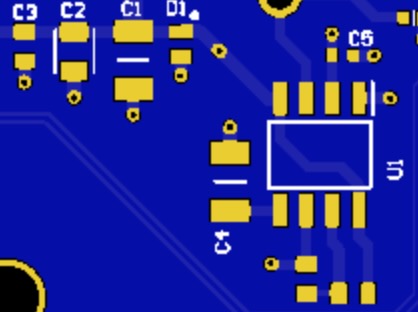Exact Measurement? For Innovation, and Progress
A coherence-based Noise Reduction System, approaches a time-independent reference, or exact standard, for the measurement of time. Download summary of scientific research here.
What is Innovation?

Areas of Application of Coherence Technology Pdf download here: https://www.upgradingtechnology.com/support-files/areasofapplication.pdf
What is a good definition of Innovation? According to Wikipedia:
"The term innovation derives from the Latin word innovatus, which is the noun form of innovare "to renew or change," stemming from in-"into" + novus-"new". Although the term is broadly used, innovation generally refers to the creation of better or more effective products, processes, technologies, or ideas that affect markets, governments, and society."
How does a company approach the challenges of innovation in a way that produces results with least effort and risk and in a way that is so easy you could consider it fun?
Innovation and Creativity: Improving cognitive function to stimulate the flow of innovation in any organization. What if there is a way to create an environment that renders everyone in that environment more creative, more innovative, with greater capacity for team collaboration, along with an ability to sense future trends?
Automation in Innovation: Nature is constantly innovating. How can an organization harness Nature's Innovative Abilities to stimulate change in an evolutionary direction that will lead to sustainable progress?
Giving the Customers What They Want: How can you satisfy the most fundamental needs of your customers? How is it possible to know what your customer wants? What is it that every customer wants?
Every customer wants to be satisfied with their purchase. But user satisfaction is not always easy to come by.
What if your product or service could automatically bring satisfaction to your customer on a fundamental level, let's say on a cellular level? Now that would make innovation a lot easier, wouldn't it? If a product or service measurably creates customer satisfaction on a cellular level, market share, and brand loyalty would be easier to come by.
...More to come on how to increase user satisfaction with fewer resources. And how to create signal quality that not only improves technological performance, but also improves the performance of living systems, including human performance.
Innovate with emerging technological singularity

Innovation means greater degrees of freedom...
Create a culture that supports innovation
To approach innovation effectively, companies can adopt several strategies to enhance creativity, reduce risk, and maximize results in engaging and efficient ways:1. **Foster a Culture of Creativity**: Companies should encourage an environment where employees feel safe to express unique ideas and take risks. This can include brainstorming sessions, innovation workshops, and providing time and resources for side projects and experimentation.
2. **Customer-Centric Innovation**: Understanding customer needs deeply and constantly can lead to more successful innovations. Applying tools like Design Thinking can help in empathizing with customers, identifying their needs, and crafting solutions that precisely meet these needs.
3. **Leverage Technology and Automation**: By automating routine tasks, companies can free up employee time for more creative and high-value activities. Additionally, technologies such as AI and data analytics can be used to identify trends and patterns that can lead to new innovative ideas.
4. **Iterative Processes**: Adopting agile methodologies that allow for small iterative releases and continuous feedback can reduce the risks associated with innovation. This approach helps in refining ideas continually based on user feedback, thus increasing the likelihood of success.
5. **Collaborative Networks**: Building partnerships and networks that extend beyond the usual boundaries of the industry can bring in fresh perspectives and ideas. This includes collaboration with academic institutions, startups, and even competitors.
6. **Sustainability and Nature-Inspired Innovation**: Emulating strategies from nature, also known as biomimicry, can lead organizations towards more sustainable and efficient innovations. Nature’s models can offer insights that are both evolutionary and revolutionary.
7. **Education and Continuous Learning**: Keeping the workforce trained and informed about the latest tools, techniques, and industry trends can stimulate continuous innovation. Providing resources for learning and improvement can maintain a high level of motivation and creativity.
8. **Signal Quality and User Satisfaction**: Innovating with a focus on enhancing not just the technological aspects but also the human aspects of products can greatly increase user satisfaction. This includes making sure that technologies align well with human physiological and psychological needs, aiming to provide solutions that users internally resonate with on a deep level.
By integrating these approaches, companies can tackle the challenges of innovation in ways that are productive, less risky, and more fun, ultimately leading to successful outcomes and sustained market relevance.